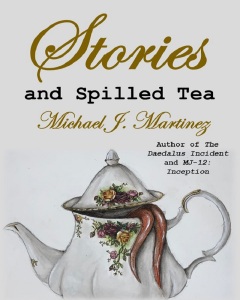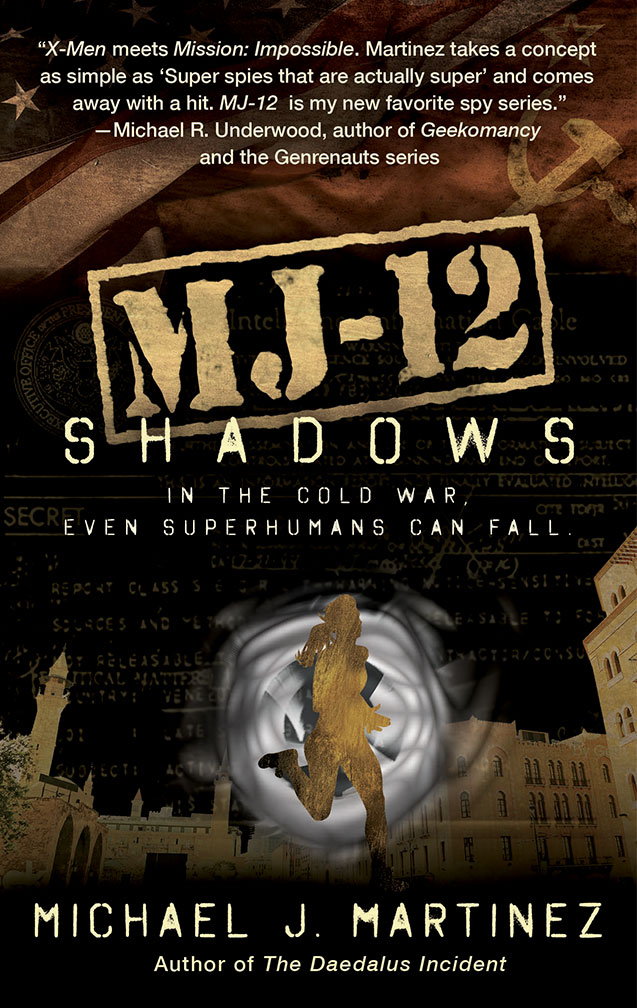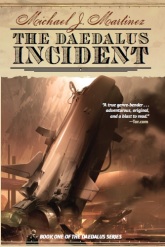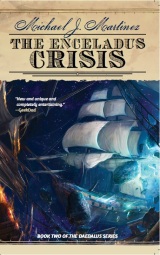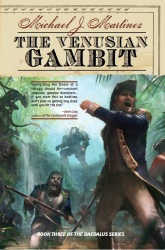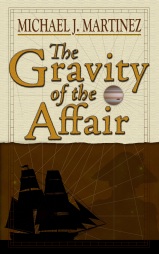I’m proud to call Scott Reintgen a fan of my work, prouder still to have talked to his high school English class about writing, and even prouder to call him an authorial colleague now that his YA trilogy has found a home. Scott is good people.
So when he asks me a question, I do my best to answer. Over on Twitter this morning, Scott asked me:
I gave some thoughts off the top of my head on Twitter (while riding into work on the beautiful New Jersey Turnpike), but I thought the topic was a good one, and worthy of more than 140-character answers. So here we go.
First off, I’m not a fan of rules, per se, when it comes to writing. If you can make it work, do it, with the caveat that any rule-breaking you do is hard, and you’ll fail many times before you find your way. But that said, when I wrote the Daedalus trilogy and MJ-12: Inception, I certainly had some guardrails keeping me on a certain path when it came to historical figures.
These worked for me, maybe they’ll work for you. Maybe they won’t. It’s all good.
Stay true to the historical figure’s beliefs and personality. The whole notion of using a historical figure in any bit of fiction is that you’re introducing a known quantity into an unknown world. Drastically changing their personality or belief system pretty much hijacks the idea altogether. Why make Benjamin Franklin an uninventive dullard in your alt-history? That’s not the Ben we know and love. Unless your story is about how Ben transformed from being a dullard to the total Renaissance Man badass we all know and love, it’s pointless. Dullard Ben is not Ben Franklin.
Now, you can certainly add setting-related aspects to a character and change his or her history. The Abe Lincoln depicted in Abraham Lincoln: Vampire Hunter is an axe-wielding warrior against supernatural forces of darkness – but he’s still Honest Abe at heart, driven to preserve the Union and free slaves. The Benjamin Franklin in The Daedalus Incident is still a polymath, a bon vivant and a revolutionary rebel, but he’s also an alchemist, which I felt was a natural outgrowth of his character in my particular setting.
Balance the historical view with the real person. Horatio Nelson is one of the greatest heroes in the English pantheon, right up there with St. George, Winston Churchill and Freddie Mercury. (OK, maybe not Freddie…he’s in a class all his own.) The modern view of Nelson is the guy lionized on the pillar in Trafalgar Square – a square named after the victory that crushed the French fleet and made Nelson a national martyr. He was dauntless, a brilliant tactician, an English patriot and Napoleon’s greatest foil at sea.
All this is true. But Lord Nelson was also hugely arrogant and vain, philandered around with a married woman while he himself was married, and was a massive opportunist when it came to his career and ascension to nobility. Knowing this, I believe, doesn’t detract from his brilliance as a naval commander, nor from his sacrifice in battle. But it certainly adds a lot of depth to the guy.
If you want to turn a historical figure into a major character, it’s homework time. You’ll be surprised what a really good biography can give you in terms of character depth. And once you have that, you’ll be able to nod to the modern view of the historical figure, while adding layers to someone we perhaps think we know, but really don’t know well.
And that’s all before you really put that historical figure into a different context.
Extrapolate thoughtfully. Yes, you can make Lincoln a vampire hunter, but Seth Grahame-Smith was super careful about the mythology he built around the concept. He thoughtfully created his vampire-invested 1800s America and extrapolated Lincoln’s reaction to it very carefully. It’s not just putting a historical figure in a new maze and watching him run about. I believe it’s about the research, getting into that person’s head and using their real history to extrapolate how they would react to a new wrinkle – or a wholesale change.
To give you a little sneak peak at MJ-12: Inception, there are two real-life historical figures with significant roles in the book: CIA Director Roscoe Hillenkoetter and Defense Secretary James Forrestal. Hillenkoetter was the first CIA director under the National Security Act of 1947, and believed firmly in a civilian agency that would collect intelligence first and foremost, while Forrestal was far more hawkish in his desire to see the United States project power across the globe, overtly or covertly, to counter the growing Communist threat. (This is, of course, a simplification of these two fine gents, and any more would enter spoiler territory.)
Both men are prominent in the real-life MAJESTIC-12 conspiracy theory mythology. But in my MAJESTIC-12 universe, they’re faced with the rise of Variants – individuals with unique, sometimes scary paranormal abilities. Knowing just what I told you about each man above, you can reasonably extrapolate how they might view these new Cold War “assets.”
There are lines that maybe you don’t want to cross. Yes, you can make changes to historical figures. Making Vlad Tepes sympathetic in any way has been done dozens of times, for example, and is a far cry from the brutal fellow he actually was. But as I mentioned to Scott on Twitter, maybe you don’t want to turn Mother Teresa into a serial killer – it’s really way too far out of character, I think, and would really only serve to anger people. Maybe you don’t want to create a justification in your historical fantasy for Hitler’s heinous crimes against humanity, because WTAF are you thinking?
This is something of a corollary to the first guideline, really, but deserves its own mention. Sometimes, there are just bad ideas out there, and if you think that skewing a historical figure in a wildly different direction is going to be fun, you may want to ask yourself why you’re doing it. Is it for the story, or just to generate controversy? Story first, man. Always story first.
And somewhat related, you may find yourself writing something using historical figures of a more recent vintage. (Friends and family of both Forrestal and Hillenkoetter, folks who knew them personally and well, are still around today, for example.) Turning a recent historical figure into a stone-cold killer or any flavor of bad guy is going to ruffle feathers. I’m not saying don’t do it, but definitely be prepared for the response if you find the story calls for it.
#SFWApro

